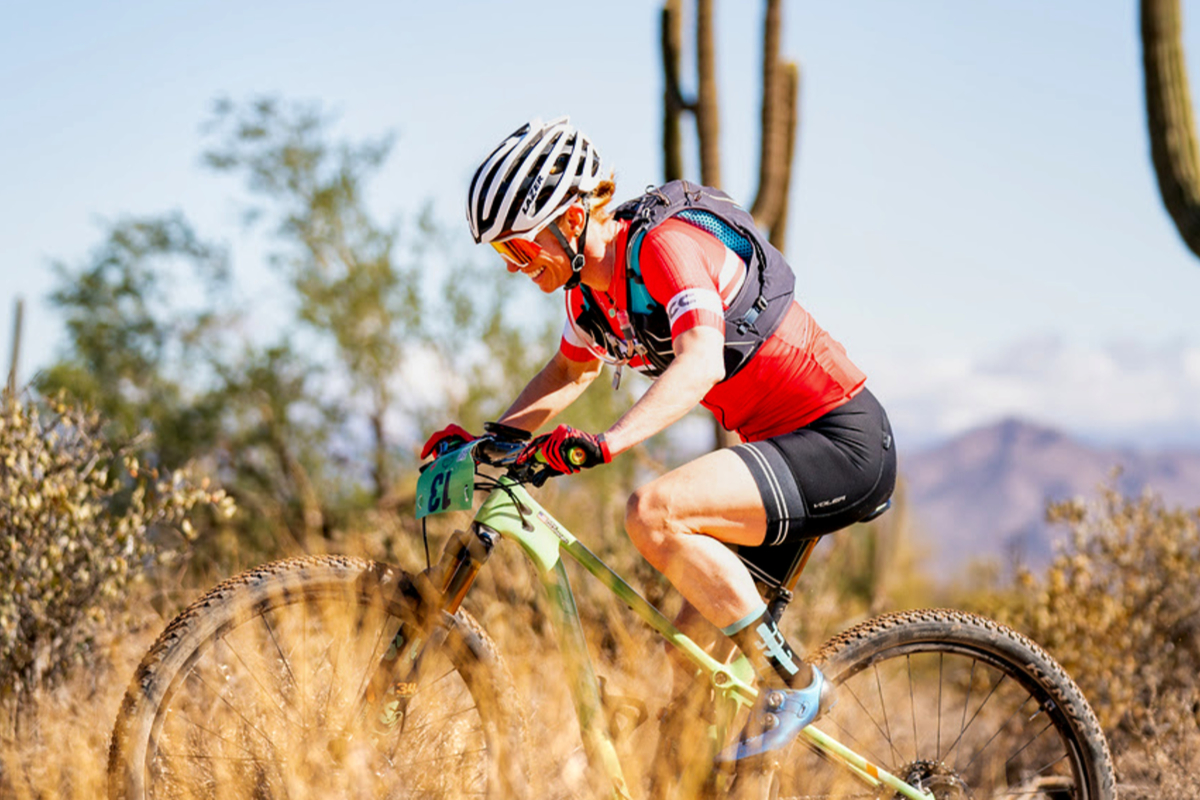Diving Into The Data With Emma Maaranen
Posted by Emma Maaranen on June 23, 2025
4iiii has a history of working with some of the best athletes in the game, as they rely on our training tools for the building blocks of their training and racing schedules. However, it’s not just the athletes themselves who rely on the reliable data they capture each session; it’s also their coaches who dive into the numbers and trends being captured during each ride, race, training block, and season—to chart a path to each athlete’s goals. This season, we’re fortunate to work with Emma Maaranen, who pulls double duty as both a pro racer across several disciplines (road, mountain bike, gravel) and a highly experienced and established coach. In conjunction with her podium pursuits, she shares her vast experience with her clients to help them level up their works with skills and fitness, which entails dissecting power and heart rate profiles. We asked Emma if she could share with us how she makes use of the data she gets from an athlete she’s working with, and how that helps sculpt a successful game plan. Read on to find out more ways in which you, too, may be able to apply your numbers to your riding - or why you might want to work with a coach like Emma!

Emma proving her race experience at the 2025 Cactus Cup, flipping the “13” race plate, to keep luck on her side ;)
When my athletes do training races and events, it is a great opportunity to check in on where fitness preparations are at for A events that are coming up. By evaluating my athlete’s race story, the course profiles, and the data, I can tailor training to make sure we are really focused where it’s needed. While heart rate (HR) data is a piece of the whole picture, power data is the most valuable to understand the physiology of my athletes. I’m going to walk you through one of my athletes’ training events and how I use the data to inform upcoming preparations for key races.
We are looking at an amateur, gravel-focused, regular podium-hitting female racer’s local gravel challenge. This is a highly contested Strava-style race where racers do the course over a week, and fastest times in categories are crowned at the end of the week. For my athlete, this was a solo effort, but she had two fast friends start at staggered times after her, where they expected to be at the finish at roughly the same time. Essentially, she had the motivation not to get caught and lay down the best possible time she could. This is different than in-person racing, where what others are doing may dictate how you pace the race.
Course profile
The course is a 70K/ 43mile loop where the first 23K/ 14.5miles is on rolling terrain, followed by a 14K/ 8.5mile climb of increasing steepness that gains 650M/ 2100’ with a less steep descent over 19K/12miles, and concludes with 13K/ 8miles of rollers to the finish. With the exception of the start and finish, the course is all on good to mid-quality gravel roads.
After this event my athlete was dismayed that her actual climb time was 3min slower than she has done earlier in the season when just doing this climb, not the approach and finish. We wanted to figure out what happened, how to fill any fitness gaps as her upcoming A race features a similar climb mid-course, and if there were strategy learnings to be gained.
I predominantly use WKO5 for data analysis, but I am going to share data exclusively from Training Peaks, as that is an app almost all cyclists use. The first thing I notice when I see this data file is that there are two all-time power performances, a 5sec and a 90min one. The 5-second effort was the finishing sprint, so I know my athletes’ preparations for these only need maintenance in the coming weeks. The 90-minute effort comes at the beginning of the almost 4-hour event. If this were a race against people in person, I would assume there was a lot of jockeying for position early on, and my athlete held onto the lead pack when the dust settled. Since this is a time-trial event, I got suspicious that she went too hard early on. Let’s look at the first hour, the rollers before the climb, to see what went on.

Power in pink, power zones in purple gradient, and course profile in grey. Dark purple is the anaerobic power zone (AP) and the dashed black line is the functional threshold power (FTP).
Normalized power (NP) for this first hour is in her threshold zone. This is high for a 4-hour time-trial effort, but what I would expect with a race start and early positioning attacks. What stands out is more than 12 minutes in her AP zone, including one 4.5-minute-long effort. That is a very long and hard sprint. AP gobbles up a ton of energy. This is the “match burning” part of racing that should be strategically used. Dishing out so many AP efforts in the first hour of a 4-hour time trial will have a price to pay later on. We will use this observation for the A race by coming up with a pacing strategy that has flexibility and checkpoints to help her decide when to burn matches and when backing off may be a better strategy.
Onto the climb is where things get really interesting!
The power for this climb starts off with big surges and recoveries, then settles into a steady effort that diminishes steadily over the 1:20 climb. Note that HR stays almost steady the whole time. This is one reason that having the power to look at in comparison to HR is so useful! If we only had HR to look at, we would interpret that she was steady at her max ability for the entire climb. With the power to compare, we see she was going as hard as she could, but the power declined despite a maximal effort. She starts the climb holding threshold power and finishes in endurance. That is a big drop in power. More than I would expect, even with the over-zealous first hour for this well-trained endurance athlete.
4iiii power meters record cadence, and this info is so valuable. This athlete started the climb with a 91 rpm cadence (in her normal range on gravel), but the cadence progressively slowed to the 40’s by the top. No matter how hard or easy you are pedalling, a cadence below 70 rpm recruits more fast-twitch muscle fibres, which are high-energy consumers even when pedalling easily. This is a part of why her HR stayed high with a low power output. When talking to this athlete, she did run out of gears for the last little bit of the climb, so the 40 rpm’s could not be avoided, but for most of the climb, she could have used an easier gear and held a more efficient cadence. We have found another thing to focus on improving for the A race!

Descent and rollers to finish with power in pink, HR in red, and cadence in yellow, all shown with 10s average smoothing.
The last 1:30 of this course was split time-wise evenly between the big descent and the rollers to the finish. Where possible, on the descent she pedalled, and on the rollers she held a steady tempo effort. HR was higher in the zone than the power, indicating she was thoughtfully emptying the tank and did not have more to give. She returned to her normal cadence in the low 90’s whenever she was pedalling steadily. It was a solid effort with a massive finish sprint.
This event shows that this athlete has plenty of sprint power in intensity, extensivity, and durability. Exactly what she needs. She is also excellent at holding a high aerobic pace long into the race and on rolling terrain. Her endurance preparations are spot on. We need to focus our efforts on long, sustained climbs, pacing, and tactics.
Climbing cadence is an easy thing to address with an athlete who has a normal cadence somewhere between 85- 100 rpm, but if her normal cadence is significantly below this zone, learning a higher cadence is a multi-month project. For this athlete, we decided to put cadence on her data screen and put in specific cadence ranges on long intervals and at the end of interval workouts to engrain the habit of not grinding. We are also changing the gearing on her bike. To build more lasting climbing power, we decided to do extensive over/under intervals after a series of VO2 work. The opening VO2 work will diminish her anaerobic energy system contributions for these efforts, so gains will be more targeted at developing her high aerobic systems.
As for the climb being 3 minutes slower on this day? We looked at the data together, and it was obvious that the approach to the climb rolled her into it tired, unlike her previous rides of the climb, and the low cadence grind contributed to an average lower power output. In the other rides, her cadence only dropped for the last 10 minutes when the gravel was very loose. In essence, she did not ride this as a time trial, and the lack of strategy was costly. However, the way she did ride the first hour mimicked a very hard gravel race start, so we were able to troubleshoot some tactics to be more successful when racing in-person with a long, hard start that is becoming the norm at gravel races.

Emma’s YouTube channel, where she breaks down her races, offers insight into courses for prospective racers, and demonstrates skill development drills, among other things.
Check out Emma’s Instagram and Youtube channels to follow her racing adventures and to learn more tips/find out more about the coaching she provides:
Instagram
Youtube
Check out the 4iiii training tools that Emma depends on for her training and racing:
4iiii Power Meters




